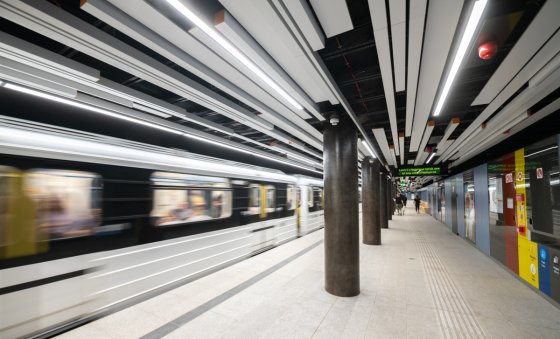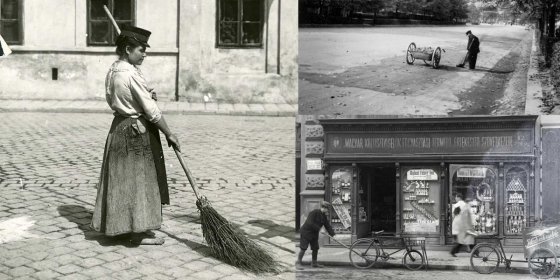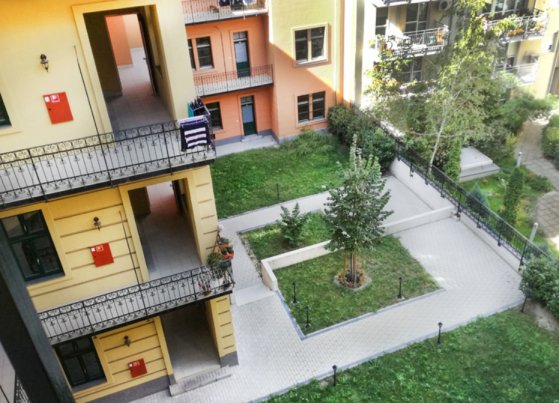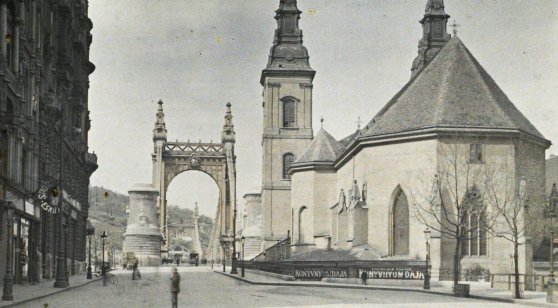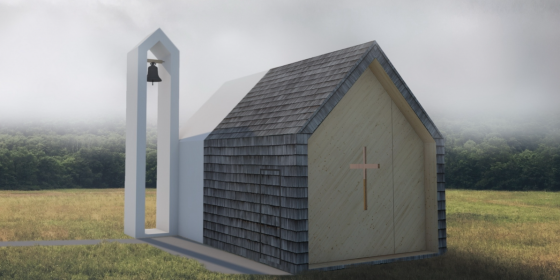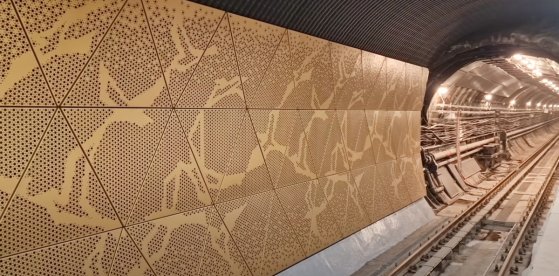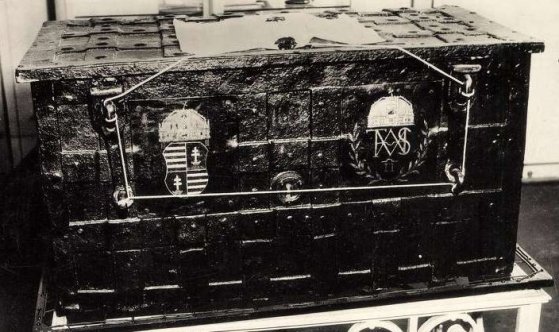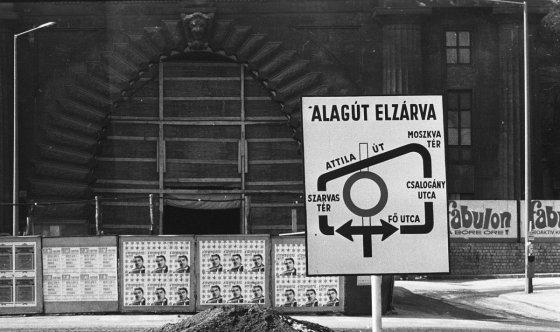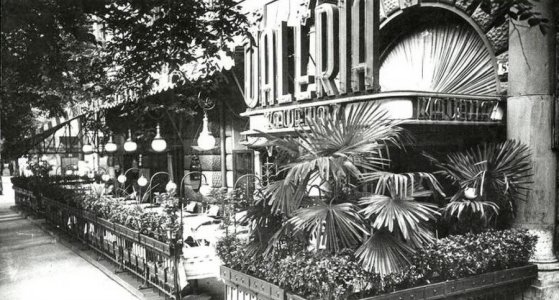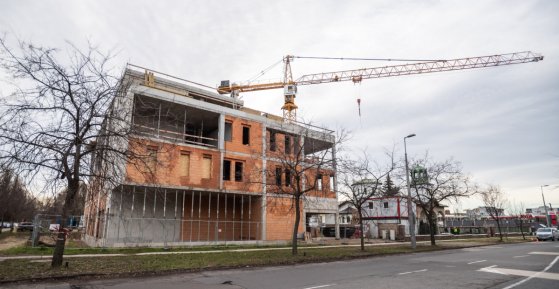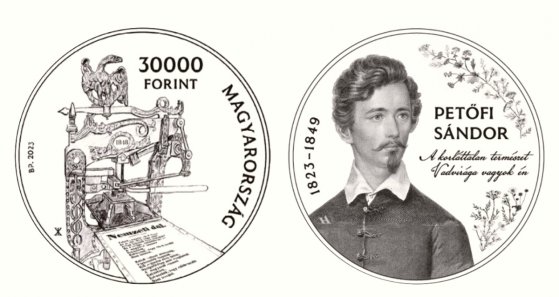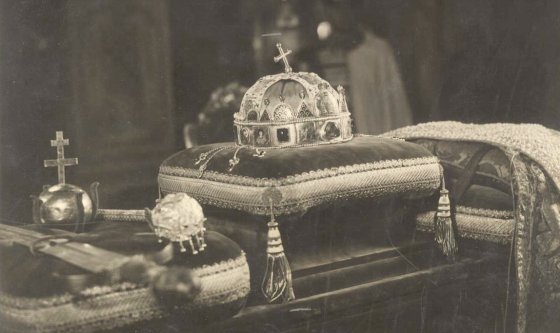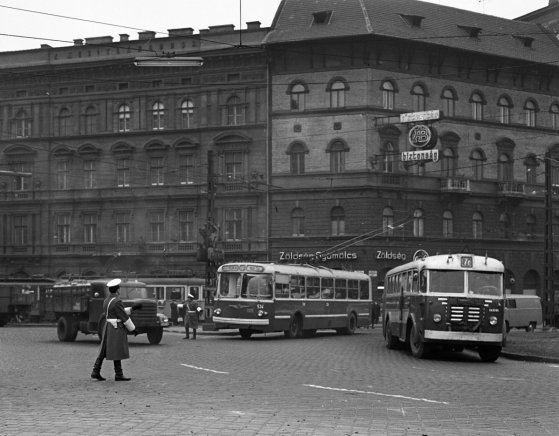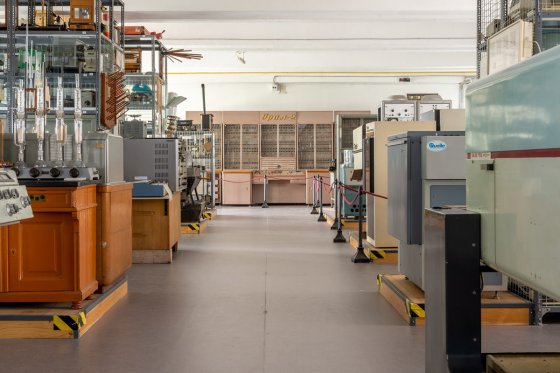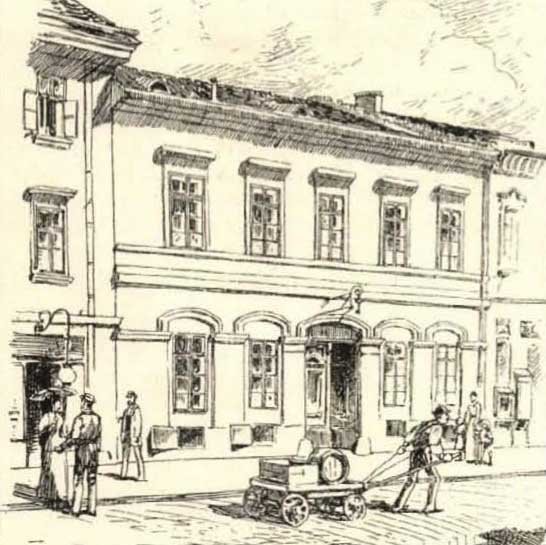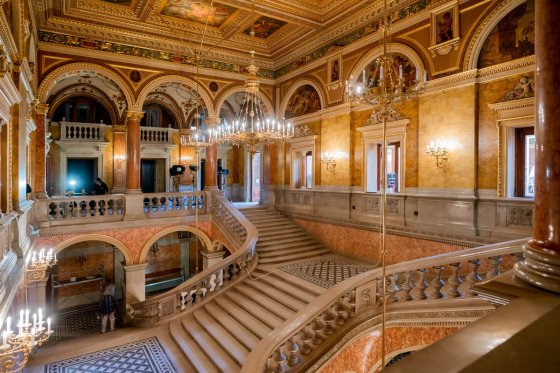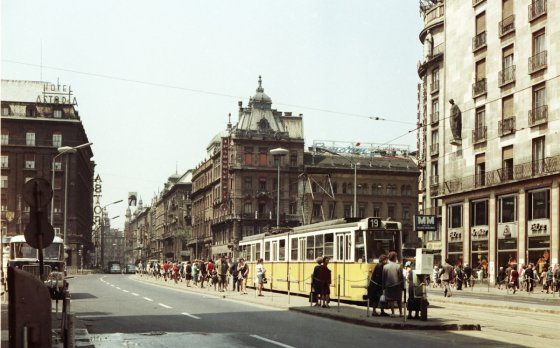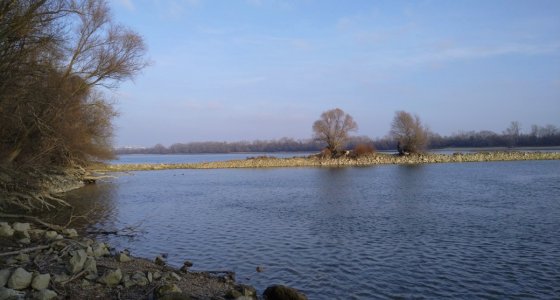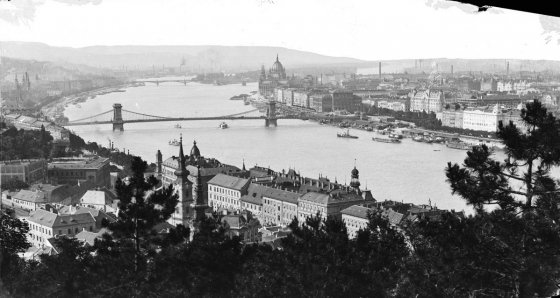 The „intertwined history” of the bridges and the city of Budapest
Which ideas and events have shaped the fate of bridges of Budapest and the cityscape? Alongside many other interesting facts, this question is also answered this newly published book by the Budapest City Archives, which introduces the history of bridges in Budapest.
The „intertwined history” of the bridges and the city of Budapest
Which ideas and events have shaped the fate of bridges of Budapest and the cityscape? Alongside many other interesting facts, this question is also answered this newly published book by the Budapest City Archives, which introduces the history of bridges in Budapest.
PestBuda
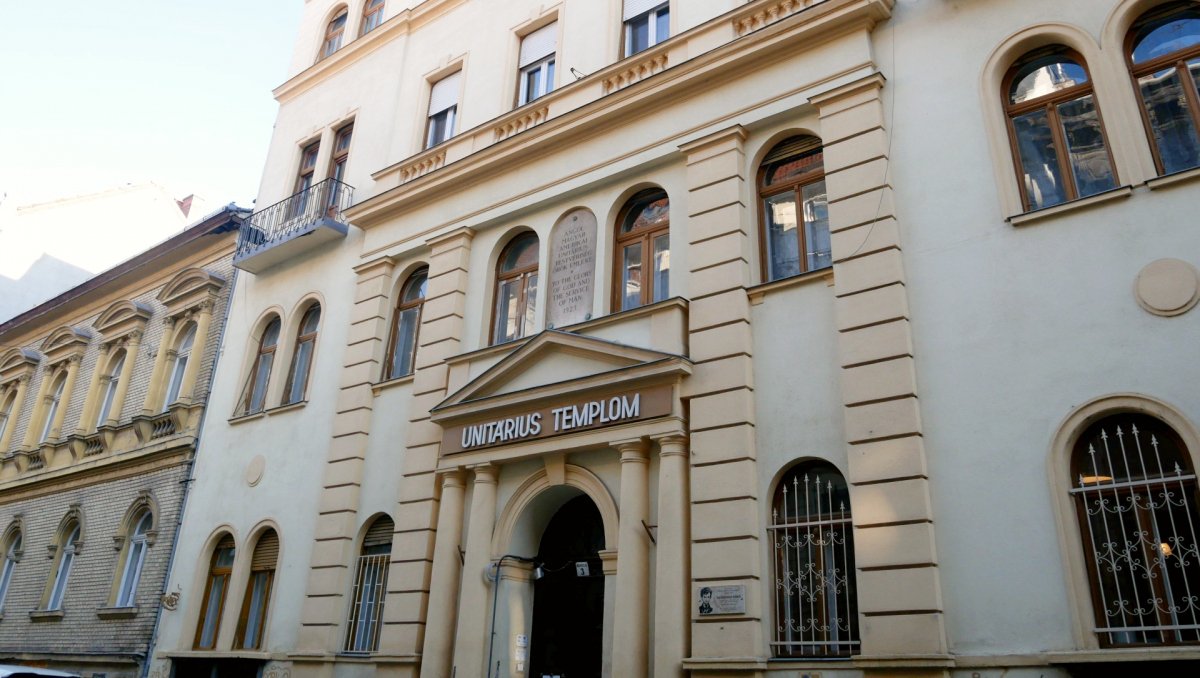 A special place in Ferencváros - the Unitarian Mission House opened 100 years ago in Hőgyes Endre Street
A special place in Ferencváros - the Unitarian Mission House opened 100 years ago in Hőgyes Endre Street
January 12, 2023 at 1:17 PM
A small street opens onto Üllői Road, which bears the name of medical professor Endre Hőgyes, the founder of the Pasteur Institute in Budapest. Not by chance, as this institute once operated here. There is another interesting building on the street, which is known to those belonging to the Unitarian religious denomination, but the majority of the townspeople may not have heard of it. The house is really special, as it is both a residential building and a church.
Január 23-án adják át a Deák tér és a Ferenciek tere metrómegállókat
January 11, 2023 at 6:00 PM
Január 23-án megnyitják a Ferenciek tere és a Deák Ferenc tér állomásokat az utasforgalom előtt. A tervek szerint március közepétől fog a teljes vonalon járni a metró, május közepétől pedig az utolsóként felújított Nagyvárad tér és Lehel tér állomásokat is használhatják az utasok.
The Deák Square and Ferenciek Square metro stations will be handed over on 23 January
January 11, 2023 at 6:00 PM
The Ferenciek Square and Deák Ferenc Square metro stations will be opened to passengers on 23 January. According to the plans, the metro will run on the entire line from the middle of March, and from the middle of May, passengers will also be able to use the last renovated Nagyvárad Square and Lehel Square stations.
Tisztább fővárost akartak – Új közterületi szabályokat fogadtak el 145 éve Budapesten
January 11, 2023 at 11:00 AM
Szigorú előírásokat fogadott el Budapest 145 évvel ezelőtt, hogy tisztább legyen a város. Megtiltották a szemét kidobását az utcára, tilos lett a porrongyot az utcai ablakon kirázni, megtiltották az utcai vizelést. A közlekedést szolgáló lovaskocsi-állomásokat naponta kellett fertőtleníteni, a lovak trágyáit csak zárt szekéren lehetett elhordani. Megszüntették a járdalocsolást, hogy megvédjék a nők ruháit, és tilos lett eldobni a dinnyehéjat az utcán a főváros új köztisztasági szabályzata szerint, amelyet 1878 januárjában fogadtak el.
These were the public cleanliness rules in Budapest 145 years ago
January 11, 2023 at 11:00 AM
Budapest adopted strict regulations 145 years ago to make the city cleaner. It was forbidden to throw garbage on the street, it became forbidden to shake the dust rag out of the street window, and it was forbidden to urinate on the street. The horse-drawn carriage stations serving transportation had to be disinfected daily, and horse manure could only be carried away in closed carts. Watering the sidewalks was abolished to protect women's clothes, and it was forbidden to throw melon rinds in the street, according to the capital's new public cleanliness regulations, which were adopted in January 1878.
Belső udvarok és utcai homlokzatok zöldítésére lehet pályázni
January 10, 2023 at 7:30 PM
Zöldebb, virágosabb belső udvarok kialakítására és utcai homlokzatok zöldítésére hirdetett pályázatot a Fővárosi Önkormányzat.
Call for applications for the greening of inner courtyards and street facades
January 10, 2023 at 7:30 PM
The Budapest City Council announced a tender for the creation of greener, more flowery inner courtyards and the greening of street facades.
A magyar főváros egy francia fotós szemével – Az 1910-es évek Budapestjét láthatjuk a fényképeken
January 10, 2023 at 4:30 PM
Egy franciaországi múzeum gyűjteményéből több tízezer archív fénykép vált nemrégiben nyilvánosan elérhetővé, közöttük van néhány 1913-ban Budapesten készült fotó. Alkotójuk Auguste Léon francia fotográfus, aki A Föld archívuma program keretében fényképezte a magyar fővárost és más helyszíneket.
The Hungarian capital through the eyes of a French photographer - Budapest in the 1910s
January 10, 2023 at 4:30 PM
Tens of thousands of archival photographs from the collection of a museum in France have recently become publicly available, among them some photos taken in Budapest in 1913. Their creator is the French photographer, Auguste Léon, who photographed the Hungarian capital and other locations as part of the Archives of the Planet program.
Adományt gyűjtenek az Anna-réti kápolna felépítésére
January 10, 2023 at 2:00 PM
Egy kis alapterületű, alig harminc négyzetméteres kápolnát terveztek a XII. kerületi Anna-rétre. Ha az adományok összegyűlnek, akkor jövőre felépülhet a Hegyvidéken a tájba illő misézőhely.
Donations are being collected for the construction of the chapel in Anna Meadow
January 10, 2023 at 2:00 PM
A chapel with a small floor area of barely thirty square metres was planned for Anna Meadow in the 12th District. If the donations are collected, next year a mass place that matches the landscape can be built in the Hegyvidék.
Neumann János-emlékévet hirdettek 2023-ra
January 10, 2023 at 11:00 AM
Neumann János matematikus születésének 120. évfordulója alkalmából a Neumann Társaság 2023-ra emlékévet hirdetett, melynek célja, hogy a világhírű matematikus örökségét minél többen megismerhessék. A neves tudós a belvárosban született, a Városligeti fasorban tanult, Budán járt egyetemre, sírja az Egyesült Államokban található.
A memorial year for János Neumann was announced for 2023
January 10, 2023 at 11:00 AM
On the occasion of the 120th anniversary of the birth of the mathematician János Neumann, the Neumann Society announced a commemorative year for 2023, the aim of which is to make the world-famous mathematician's legacy known to as many people as possible. The famous scientist was born in the city centre, studied in Városligeti Avenue, went to university in Buda, and his grave is in the United States.
Aranyszínű lett a metrómegálló a Ferenciek terén
January 9, 2023 at 6:00 PM
Hamarosan megnyílik a metróállomás a Ferenciek terén, ahol az utasok a korábban megszokottól teljesen eltérő látvánnyal fognak találkozni. Az aluljárószinten megmaradt a hagyományos narancssárga szín, de a mozgólépcsővel az utastérbe érkezőket aranyszínű állomás fogadja majd. A színek és grafikai motívumok a térnek nevet adó ferences rendre utalnak.
Gilded metro station in Ferenciek Square
January 9, 2023 at 6:00 PM
The Ferenciek Square metro station will open soon, where passengers will encounter a sight completely different from what they were used to before. The traditional orange colour remained on the underpass level, but those arriving by the escalator will be greeted by a golden station. The colours and graphic motifs refer to the Franciscan order that gave the space its name.
Páncélterem rejtekében – Így őrizték a Szent Koronát a budai Várban
January 9, 2023 at 1:30 PM
Ma már természetesnek tartjuk, hogy a magyar Szent Koronát bárki megtekintheti. Ám évszázadokon át egy lezárt vaspántos ládában tárolták, kulcsokkal és pecsétekkel védve, s csak különleges ünnepeken, így az 1867-es koronázáskor, az 1896-os millenniumi ünnep vagy az 1938-as eucharisztikus kongresszus idején lehetett elővenni. Féltve őrzött nemzeti kincsünk 45 évvel ezelőtti hazatérte alkalmából azt mutatjuk be, milyen körülmények között vigyáztak a koronára a budai Várban.
Hidden in the Strong Room - This is how the Holy Crown was kept in Buda Castle
January 9, 2023 at 1:30 PM
Today, it is taken for granted that anyone can view the Holy Crown of Hungary. But for centuries it was stored in a closed chest with iron straps, protected by keys and seals, and could only be taken out on special holidays, such as the coronation in 1867, the millennium celebration in 1896 or the Eucharistic Congress in 1938. On the occasion of the return of the fearfully guarded national treasure 45 years ago, Pestbuda presents the conditions under which the crown was guarded in Buda Castle.
A budai Váralagút felújítása 50 éve kezdődött a városegyesítés 100. évfordulója alkalmából
January 8, 2023 at 2:00 PM
A budai Váralagút Budapest fontos közlekedési útvonala és egyben érdekes műszaki emlék is. Átadásakor, 1857-ben az akkori egyetlen hídhoz vezető útvonal része volt, és a XXI. századra sem vesztett forgalmi jelentőségéből. Ugyan lovas kocsik számára tervezték, ma autók közlekednek benne. Az átjáró mai képe 50 éve alakult ki, a munkák miatt 1973. január 8-án lezárták az Alagutat.
The renovation of the Buda Castle Tunnel began 50 years ago on the occasion of the 100th anniversary of the city unification
January 8, 2023 at 2:00 PM
The Buda Castle Tunnel is an important traffic route in Budapest and also an interesting technical monument. When it was handed over in 1857, it was part of the route leading to the only bridge at the time, and it has not lost its traffic importance even into the 21st century. Although it was designed for horse-drawn carriages, today it is used by cars. The current appearance of the passage took shape 50 years ago, the Tunnel was closed on 8 January 1973 due to the works.
Ahol Gárdonyi és Móricz is gyakori vendég volt – Volt egyszer egy Valéria kávéház a Nagykörúton
January 7, 2023 at 11:00 AM
A pesti Nagykörút fejlődésének is meghatározója a valamikori Valéria kávéház, hiszen az Üllői út és a József körút sarkán nyílt kávézó az egész környékre pezsgő társasági életet hozott. A több mint 130 éves neoreneszánsz, háromemeletes épület túlélte a háborúkat és a forradalmat, ám azóta többször átalakították.
Vízkereszt napján tartották a ferencvárosi Bolgár Kulturális és Oktatási Központ bokrétaünnepségét
January 6, 2023 at 8:30 PM
A IX. kerületi bolgár művelődési házzal szembeni telken, az ortodox templom közelében épül a Bolgár Kulturális és Oktatási Központ. Az épület bokrétaünnepségét vízkereszt napján, január 6-án tartották, amely egybeesik az ortodox keresztények karácsonyi ünnepével.
The Bulgarian Cultural and Education Centre in Ferencváros held a topping-out ceremony on Epiphany Day
January 6, 2023 at 8:30 PM
The Bulgarian Cultural and Education Centre is to be built on the plot opposite the Bulgarian community centre in the 9th District, near the Orthodox church. The building's topping-out ceremony was held on Epiphany Day, 6 January, which coincides with the Orthodox Christmas Day.
Emlékérmén Petőfi, a Magyar Nemzeti Levéltár és a Lovarda
January 6, 2023 at 3:00 PM
A Magyar Nemzeti Bank összesen 24 emlékérmét bocsát ki idén, összesen 14 különböző tematikában. Az új pénzeken szerepel többek között a 200 éves Himnusz, Petőfi Sándor, Csokonai Vitéz Mihály, valamint a 300. évfordulóját ünneplő Magyar Nemzeti Levéltár. Hatszögletű emlékérme is lesz, ilyen a Nemzeti Hauszmann Program emlékérme-sorozat új eleme, a Lovarda.
Petőfi, the Hungarian National Archives and the Riding Hall to be on the collector coins
January 6, 2023 at 3:00 PM
The Hungarian National Bank is issuing a total of 24 collector coins this year, in a total of 14 different themes. The new coins feature, among others, the 200-year-old National Anthem, Sándor Petőfi, Mihály Csokonai Vitéz, and the Hungarian National Archives, which is celebrating its 300th anniversary. There will be a hexagonal coin as well, such as the new element of the National Hauszmann Program series, the Riding Hall.
A Szent Korona hazatért – A Rákóczi-induló hangjai mellett emelték le az amerikai gépről a magyar ereklyéket
January 6, 2023 at 10:00 AM
Budapest és Magyarország 1978. január 5-én és 6-án a figyelem középpontjába került a nemzetközi sajtóban. Ennek oka az volt, hogy ekkor adta vissza a magyar nemzetnek a Szent Koronát az Amerikai Egyesült Államok. A Szent Koronát ünnepélyesen fogadták Budapesten.
The Holy Crown has returned home – Hungarian relics were taken off the American plane to the sounds of the Rákóczi March
January 6, 2023 at 10:00 AM
On 5 and 6 January 1978, Budapest and Hungary became the centre of attention in the international press. The reason for this was that it was then that the United States of America returned the Holy Crown to the Hungarian nation. The Holy Crown was solemnly received in Budapest.
A BKV 55 éve jött létre – Minden járművön kalauz volt, és olcsón lehetett utazni
January 4, 2023 at 11:00 AM
A Budapesti Közlekedési Vállalat 1968. január 1-jén vette át a fővárosi tömegközlekedést három másik társaságtól. A budapesti villamosokat, autóbuszokat, HÉV-eket és a többi közlekedési eszközt addig ugyanis három önálló vállalat üzemeltette, a Fővárosi Villamosvasút, a Fővárosi Autóbuszüzem és a Budapesti Helyiérdekű Vasút. Ezenkívül az új szervezet magába olvasztotta a Fővárosi Hajózási Vállalatot is.
BKV was established 55 years ago - There was a ticket inspector on all vehicles and one could travel cheaply
January 4, 2023 at 11:00 AM
On 1 January 1968, Budapest Transport Company took over the capital's public transport from three other companies. Until then, Budapest's trams, buses, suburban railways and other means of transport were operated by three independent companies, the Metropolitan Electric Railway Municipal Company, the Metropolitan Bus Municipal Company, and the Metropolitan Suburban Railway Municipal Company. In addition, the new organisation absorbed the Municipal Shipping Company.
125 éves a Központi Statisztikai Hivatal székháza
January 3, 2023 at 3:30 PM
A Magyar Királyi Központi Statisztikai Hivatal 1871-ben jött létre. Az intézménynek hosszú időn keresztül nem volt önálló otthona, folyamatosan költözni kényszerült. A fordulópont 1896-ban következett be, amikor is törvénycikk jelent meg az önálló épület felépítéséről. A terveket az elismert építész és műegyetemi tanár, Czigler Győző készítette. Az új székház átadására 1897. december 18-án került sor, de teljesen csak 1898 januárjában vették birtokba az épületet a hivatal munkatársai.
The headquarters of the Hungarian Central Statistical Office is 125 years old
January 3, 2023 at 3:30 PM
The Hungarian Royal Central Statistical Office was established in 1871. For a long time, the institution did not have an independent home and was constantly forced to move. The turning point occurred in 1896 when a legal article was published on the construction of the independent building. The plans were prepared by the renowned architect and university professor Győző Czigler. The handover of the new headquarters took place on 18 December 1897, but the staff of the office only took possession of the building in January 1898.
A háromszor megalapított Műszaki Múzeum – Páratlan magyar emlékeket őriznek az 50 éve létrehozott gyűjteményben
January 2, 2023 at 5:00 PM
Ötven évvel ezelőtt harmadszor is megalapították a Magyar Műszaki Múzeumot. Az 1973. január 1-jén kelt alapító okirat szerint feladata a hazai természettudományi és technikai emlékanyag gyűjtése és ismertetése. A múzeum olyan különleges kincseket őriz, mint Jedlik Ányos 1828-ban megalkotott villanymotorja és 1855-ben készített elektromos kiskocsija, a világ első porlasztós motorja, az első magyar számítógép vagy a legelső Gömböc.
The Museum of Technology was founded three times - Unparalleled Hungarian memories are preserved in the collection created 50 years ago
January 2, 2023 at 5:00 PM
Fifty years ago, the Hungarian Museum of Technology was founded for the third time. According to the founding document dated 1 January 1973, its task is to collect and present Hungarian natural science and technical memorabilia. The museum preserves such special treasures as Ányos Jedlik's electric motor created in 1828 and his electric car made in 1855, the world's first carburettor engine, the first Hungarian computer and the very first Gömböc.
Így élt Pesten a mézeshetek után Petőfi Sándor és Szendrey Júlia
January 1, 2023 at 6:30 PM
Az ifjú, hazafias költővé váló Petőfi Sándor Pesten az 1840-es évek elején albérletből albérletbe költözött, a szerelem és a házasság azonban megváltoztatta addigi életét: albérlőből főbérlővé lépett elő. Ezeket a helyszíneket idézzük föl most nagy nemzeti költőnk születésének 200. évfordulóján, bemutatva, melyik utcában, melyik házban, milyen körülmények között élt ifjú feleségével a házasságkötés, a nászút, a mézeshetek után.
This is how Sándor Petőfi and Júlia Szendrey lived in Pest after their honeymoon
January 1, 2023 at 6:30 PM
Sándor Petőfi, who became a young, patriotic poet, moved from sublet to sublet in Pest in the early 1840s, but love and marriage changed his life: he went from subtenant to main tenant. Pestbuda recalls these locations on the 200th anniversary of the birth of the great national poet, showing in which street, in which house, and under what conditions he lived with his young wife after the marriage and the honeymoon.
Így fejlődött Budapest 2022-ben – Középületek sorát adták át idén
December 31, 2022 at 11:00 AM
A 2022-es év szinte biztos, hogy negatív színezettel vonul majd be a történelembe, hiszen válságok sora terhelte, melyekből hazánk sem vonhatta ki magát. Ennek ellenére Budapest nagyon szépen fejlődött, sok beruházás ért véget idén: több új épület elkészült, és számos műemléket helyreállítottak. Az év utolsó napján visszapillantunk, és összefoglaljuk az esztendő történéseit.
This is how Budapest developed in 2022 - Several public buildings were handed over this year
December 31, 2022 at 11:00 AM
2022 will almost certainly go down in history with a negative tone, as it was burdened by a series of crises from which Hungary could not extricate itself. Nevertheless, Budapest developed very nicely, many investments were completed this year: several new buildings were completed and many monuments were restored. On the last day of the year, Pestbuda looks back and summarises the events of the year.
Az utolsó villamos 50 éve haladt át a Rákóczi úton és az Erzsébet hídon
December 30, 2022 at 6:00 PM
A Rákóczi úton már 125 évvel ezelőtt elindult a villamosközlekedés, és volt idő, amikor öt különböző vonal járatai haladták át itt. Ám az utazóközönség által nagyon kedvelt közlekedési eszközt fokozatosan kiszorították a belső városrészekből. A Rákóczi úton és az Erzsébet hídon 50 évvel ezelőtt, 1972. december 31-én gördült keresztül az utolsó villamos, útja a Móricz Zsigmond körtéren ért véget. Hamarosan megkezdődött a vágányok bontása. Az elmúlt években egyre többször vetődött fel, hogy vissza kellene hozni a villamost erre útvonalra.
The last tram passed through Rákóczi Road and Erzsébet Bridge 50 years ago
December 30, 2022 at 6:00 PM
Tram traffic started on Rákóczi Road already 125 years ago, and there was a time when five different lines passed through here. But the means of transport, which is very popular with the travelling public, was gradually pushed out of the inner city districts. The last tram passed through Rákóczi Road and Erzsébet Bridge 50 years ago, on 31 December 1972, and its journey ended at Móricz Zsigmond Square. The demolition of the tracks soon began. In recent years, it has been brought up more and more often that the tram should be brought back to this route.
Háros, a déli végek szépsége
December 29, 2022 at 3:00 PM
A főváros természeti szépségei eléggé szétszórtan helyezkednek el. Ez talán annyiból szerencsés, hogy legalább egy park, erdő vagy vízpart minden kerületre jut. Mostani utunk során a Duna fő ágának legdélebbi részét vesszük szemügyre Budapestnél. Azt a vidéket, ahol már évezredek óta összeér a csendes településekkel a szélesen, lassan áramló Duna. Ez a vidék a XXII. kerület legszebb Duna-parti része: Háros.
Háros, the beauty of the southern ends
December 29, 2022 at 3:00 PM
The capital's natural beauties are quite scattered. This is perhaps fortunate in that every district has at least one park, forest or waterfront. During this trip, Pestbuda will take a look at the southernmost part of the main branch of the Danube near Budapest. The region where the wide, slow-flowing Danube has been touching the quiet settlements for thousands of years. This region is the most beautiful part of the 22nd District along the Danube: Háros.
More articles
 The „intertwined history” of the bridges and the city of Budapest
Which ideas and events have shaped the fate of bridges of Budapest and the cityscape? Alongside many other interesting facts, this question is also answered this newly published book by the Budapest City Archives, which introduces the history of bridges in Budapest.
The „intertwined history” of the bridges and the city of Budapest
Which ideas and events have shaped the fate of bridges of Budapest and the cityscape? Alongside many other interesting facts, this question is also answered this newly published book by the Budapest City Archives, which introduces the history of bridges in Budapest.
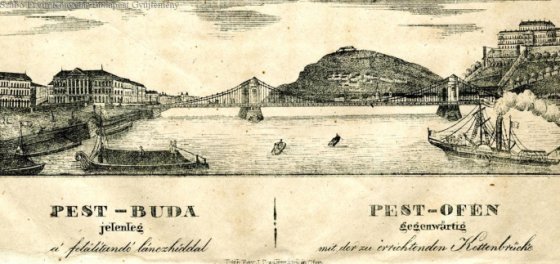 The Bridge Report, which brought a turning point in the history of Budapest
A travel report that changed the history of Pest and Buda, as well as Hungary. The little book contributed to the change of half a thousand years of legal customs and the implementation of an investment of unprecedented size and technical quality. This book was The Bridge Report [Hídjelentés in Hungarian].
The Bridge Report, which brought a turning point in the history of Budapest
A travel report that changed the history of Pest and Buda, as well as Hungary. The little book contributed to the change of half a thousand years of legal customs and the implementation of an investment of unprecedented size and technical quality. This book was The Bridge Report [Hídjelentés in Hungarian].
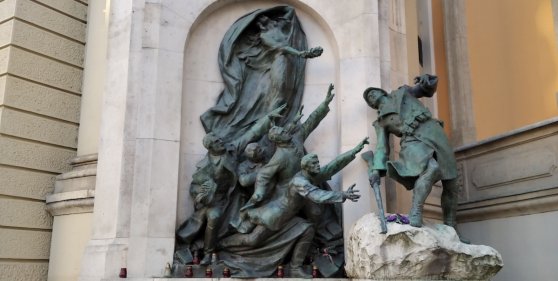 Drama on the university wall - The heroic monument was planned 95 years ago
In the constant hustle and bustle of the Egyetem Square in Pest, the students may not even notice the monument that decorates the short section of wall between the church and the central building of ELTE. However, it commemorates their predecessors, the heroes who fought for their country in World War I, and those who heroically helped them. The first design of the dramatically collapsing soldier was born in 1928, ninety-five years ago.
Drama on the university wall - The heroic monument was planned 95 years ago
In the constant hustle and bustle of the Egyetem Square in Pest, the students may not even notice the monument that decorates the short section of wall between the church and the central building of ELTE. However, it commemorates their predecessors, the heroes who fought for their country in World War I, and those who heroically helped them. The first design of the dramatically collapsing soldier was born in 1928, ninety-five years ago.

